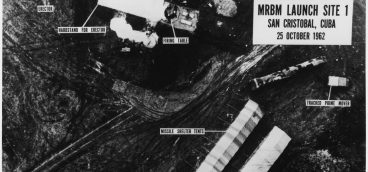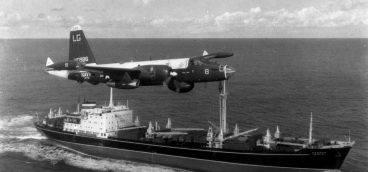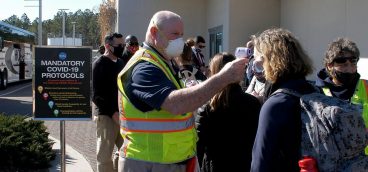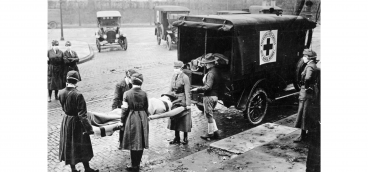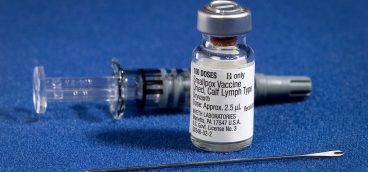Too Close for Comfort
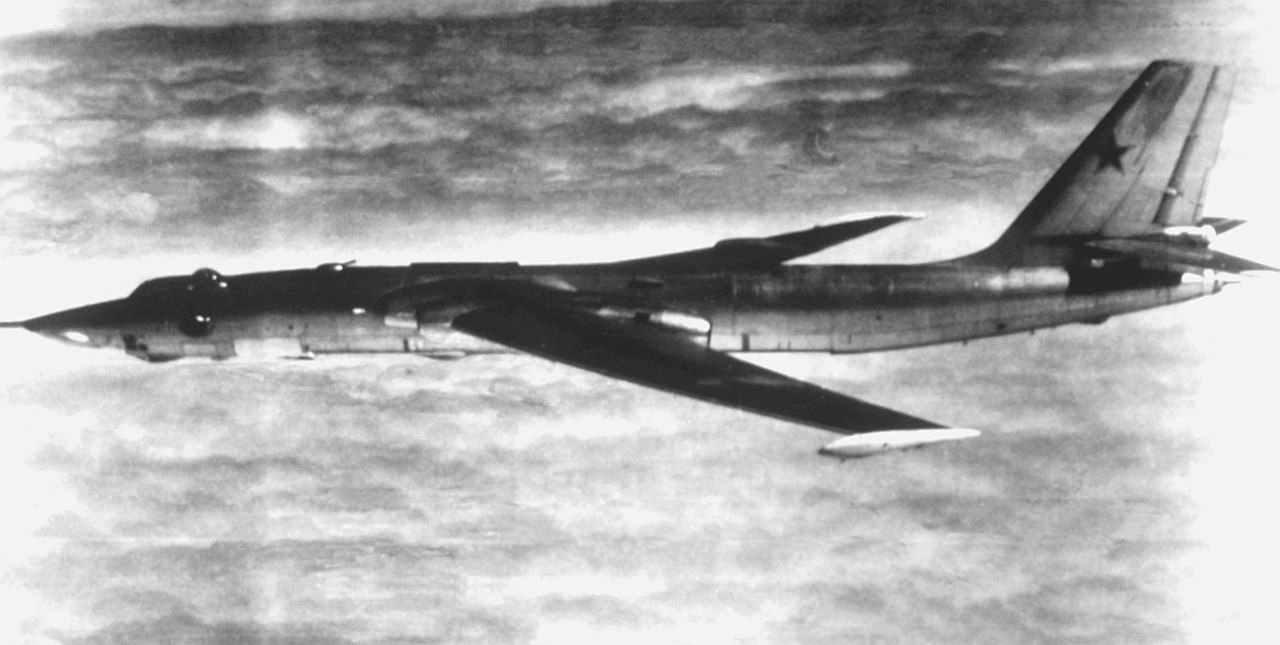
“This was not only the most dangerous moment of the Cold War, it was the most dangerous moment in human history.” — Arthur M. Schlesinger Jr.
Last week we watched as the captain and political officer of a Soviet B-59 submarine agreed to launch a nuclear-tipped torpedo at the US Navy ships that had located it. But the torpedo was never launched – why?
Previously in this series: The Blackest Day, Pt III
By purest happenstance, the sub the US Navy had located carried not just the captain and political officer, like most Soviet subs – it also had aboard it the overall commander of the Soviet submarine flotilla in Cuba, Vasily Arkhipov. Arkhipov was serving as executive officer of the B-59 sub – the second in command to Captain Savitsky – but he was also in overall command of the flotilla mission, effectively using Savitsky’s sub as his command vessel.
Thus the command lines were complicated. Savitsky was in command of the B-29 sub, with Arkhipov as his second. But Arkhipov was also in command of the overall sub flotilla and therefore both Savitsky’s boss and the senior submarine commander in the Cuban arena.
Because of this complex command structure, the usual standing orders for that B-59 sub alone had been modified and now required all three officers to agree before the nuclear torpedo could be launched. Savitsky and the political officer had already agreed, but Arkhipov refused to endorse their decision.
This enraged Savitsky, and the tension in the submarine (and the increasing heat – the B-59’s batteries had run low and its air-conditioning had failed) caused the argument to escalate. But at the end of the day Arkhipov prevailed and Captain Savitsky even came to agree with him. This outcome happened in part due to Arkhipov’s more senior status and in part because of Arkhipov’s ability to block the decision to launch in any event by refusing to ratify the captain and political officer’s decision.
But there was more to it than that – Savitsky had enormous respect for Arkhipov because the latter was a revered hero of the Soviet Union.
Barely a year earlier Arkhipov had been the executive officer of the K-19, the first Soviet submarine to carry intercontinental ballistic missiles with nuclear warheads. The K-19 had been hastily designed and built because the Soviets believed they were being left behind by American nuclear submarine advances.
On the K-19’s maiden voyage in July 1961, the sub encountered a series of increasingly catastrophic failures, all traceable back to haste and poor workmanship at the Soviet naval yard in Severodvinsk. First, the sub’s long-range radio system failed, meaning that it could no longer contact Moscow. Far worse, pressure in the starboard nuclear reactor’s cooling system dropped to zero and the reactor temperature rose uncontrollably, eventually reaching 1,470 degrees Fahrenheit.
The cooling system failure occurred because of sloppy installation work at the shipyard. A worker, unhappy about his working conditions and long hours, took dangerous shortcuts that left tiny, invisible cracks in the primary cooling system piping.
In a desperate effort to avoid a nuclear meltdown, Arkhipov and Captain Nikolai Zateyev made a drastic decision – they ordered the sub’s engineers to jury-rig a new coolant system, which required the men to work in close proximity to the leaking radiation.
Remarkably, the new system worked and the reactor temperature declined. Unfortunately, the cooling system failure had released radiation which was carried by steam through the sub’s ventilation system, irradiating everyone on board.
Within a month, all the sub’s engineers were dead, and 15 more crew members died over the next two years. Arkhipov himself would die of kidney cancer, undoubtedly brought on by the radiation accident. Interestingly, Soviet President Mikhail Gorbachev would later nominate the crew of the K-19 for a Nobel Peace Prize for their heroic actions. In 2002, Liam Neeson played Arkhipov in the film, K-19: The Widowmaker.
In any event, angry and frustrated as he was, Captain Savitsky eventually bowed to Arkhipov’s senior rank and heroic status and no torpedo was launched. A gentle, soft-spoken and mild-mannered man, Arkhipov now returned to the USSR in disgrace. One admiral told him, “It would have been better if you’d gone down with your ship.”
Much later, though, when it became widely known that the B-59 submarine had been armed with a nuclear-tipped torpedo, Arkhipov became known as “the man who saved the world.”
The long and short of the B-59 incident seems to be that, as far as the human species is concerned, it’s far better to be lucky than smart. If any other sub had been located – i.e., one of the ones without Arkhipov on board – it seems likely that that sub’s nuclear torpedoes would have been fired.
* * *
We’ve now described the lead-up to the crisis and the major incidents that occurred, but we haven’t looked at the negotiations between the Americans and the Soviets. Before we do, we need to keep two things in mind.
First, we know a great deal more about the American team and its discussions than we do about the Soviet team. Most of the American material has been declassified, and while Russia released most of the Soviet material after the fall of the USSR, there wasn’t all that much Soviet material to be released.
Second, unlike President Kennedy, who worked closely with his EXCOMM advisory team throughout the crisis, Khrushchev was much more of a lone wolf – which was characteristic of the Soviet leader by the early 1960s.
Finally, it’s important to remember that throughout the crisis President Kennedy was secretly recording the deliberations of EXCOMM. The other EXCOMM members didn’t know about the recordings (except possibly for Robert F. Kennedy) and therefore acted naturally, for better or worse. But, at least to some extent, Kennedy was playing to posterity.
With those caveats in mind, we’ll take a look at the US-USSR negotiations next week.
Next up: Ukraine through the Lens of Cuba, Part 5


